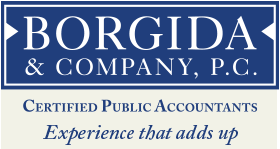The year-end will be here soon. Here are 4 year-end tax planning steps for Connecticut taxpayers:
1) Open an IRA
All taxpayers with earned income under the age of 70 can fund an IRA. In 2013 the IRA can be funded up to $5,500. There is an additional “catch-up” provision for taxpayers age 50 and older. They are allowed to contribute an additional $1,000 for a total of $6,500. Higher income taxpayers cannot deduct an IRA. For a married couple filing a joint return they can’t deduct an IRA if they have a retirement plan at work and their modified adjusted gross income is over $115,000. If neither spouse has a retirement plan at work, then their IRA’s would be fully deductible. You have until April 15, 2014 to fund your 2013 contribution.
2) Open a Connecticut Higher Education Trust Account
Connecticut taxpayers are allowed a deduction on their Connecticut Income Tax Return for contributions to the Connecticut Higher Education Trust (“CHET”). This is the state’s College Savings 529 plan. Married couples filing a joint return can deduct up to $10,000 on their Connecticut return. Single taxpayers can deduct up to $5,000 on their income tax return. To obtain a 2013 tax deduction the account must be funded in 2013.
3) Prepay Your Real Estate Taxes
The second installment of real estate taxes is due in January, 2014. Paying these taxes in 2013 will allow a tax deduction this year.
4) Bunch Your Medical and Miscellaneous Itemized Deductions
Medical expenses and miscellaneous itemized deductions are only allowed when they exceed a certain percentage of Adjusted Gross Income (“AGI”). Medical expenses are allowed when they exceed 10% of AGI. There is transitional relief for taxpayers over age 65. This relief also applies to a married couple if either spouse is over age 65. They are allowed to deduct medical expenses when they are over 7.5% of AGI. They will be allowed to do this until 2016 and then they would also be subject to the 10% rule.
Miscellaneous itemized deductions are only allowed when they exceed 2% of AGI. Some of the miscellaneous itemized deductions are tax preparation fees, investment expenses, safe deposit box, unreimbursed employee deductions.
The idea would be to try to put more of these expenses in one year to obtain the deduction.
Will you use these 4 Steps to save money?



